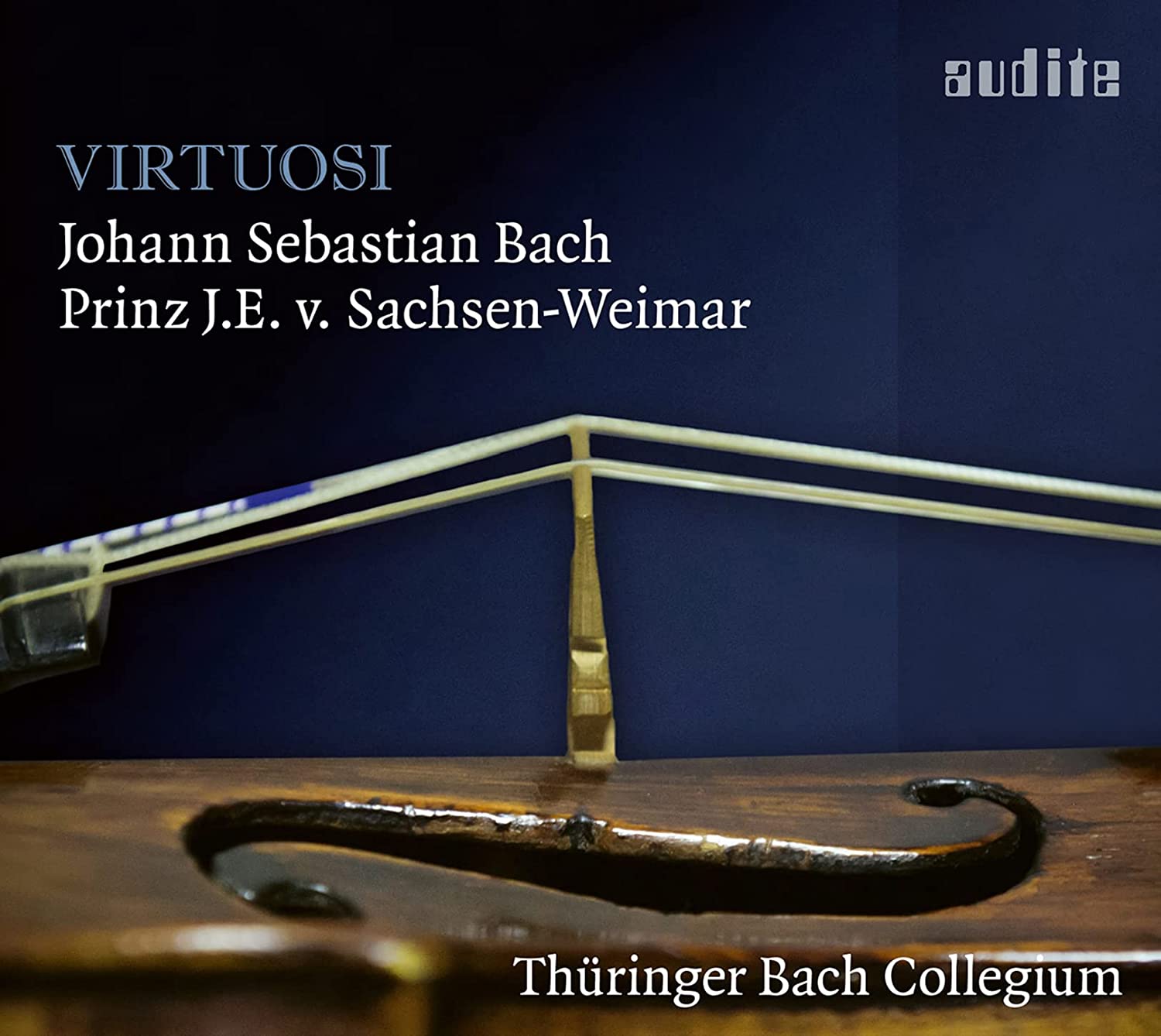J. S. Bach | Prinz J. E. v. Sachsen-Weimar
Thüringer Bach Collegium
66:54
audite 97.790
Click HERE to buy this on amazon.co.uk
[These sponsored links help the site remain alive and FREE!]
The Thüringer Bach Collegium, an ensemble of two violins, viola, violoncello and contrabass, with cembalo and lute, are directed by the veteran violinist Gernot Süßmuth. They play the concerto for three solo violins in D (BWV 1064); for organ in D minor by Johann Gottfried Walther on a theme from Torelli; for oboe and violin in C minor (BWV 598); for organ in C (BWV 595) a fragment from Prince Johann Ernst; a concerto in B flat for violin (arranged by Prince Johann Ernst from BWV 983 and reconstructed by Gernot Süßmuth); a concerto for organ in G after Prince Johann Ernst (BWV 592); and finally the double violin concerto in D minor (BWV 1043).
The Italian concerto had found its way into the princely courts of Germany by the end of the 17th century, and its arrival in the court of Wilhelm Ernst, Duke of Saxe-Weimar is well-documented thanks to his musical nephew’s – Prince Johann Ernst’s – return from his grand tour which included bringing the latest Vivaldi scores from Amsterdam.
This recording traces Bach’s making the Italian concerto his own, adapting the originals for a variety of instrumentation that seem to have been encouraged by the young Prince’s passion for the violin as well as keyboard. The (earlier) solo instrument versions reconstructed here survive in many cases in later versions as concertos for harpsichord, as we know them best; but here is a programme worked out to illuminate Bach’s evolving technique.
The exercise is instructive, and that it its prime purpose. Not all of the music is of the very highest quality. Now based in Arnstadt, several of the players have played for many years in the Staatskapelle in Weimar. They clearly enjoy their period instrument life, even if their playing sounds more full-blooded than we often hear from one-to-a-part ensembles. I commend it as with their other recordings of music off the beaten track that can help illuminate the criss-crossing of influences and variety of instrumentation as Germany absorbed the instrumental concerto into the mainstream of its music-making.
David Stancliffe
